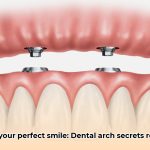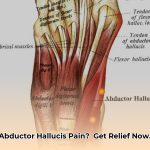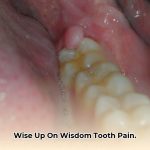Jaw pain, sleep troubles, or simply unhappy with your smile? You’re not alone. Many seek solutions beyond traditional braces, and Advanced Lightwire Functional (ALF) orthodontics offers a holistic approach. This guide explores ALF—what it is, how it works, its potential benefits and drawbacks, and whether it might be right for you.
Debunking Orthodontic Myths
Before we delve into ALF, let’s address some common misconceptions about orthodontics:
- Myth: Braces are the only way to straighten teeth. Reality: While braces are common, other effective methods exist, like ALF, which focuses on the underlying causes of misalignment.
- Myth: Orthodontics is purely cosmetic. Reality: Orthodontics can significantly impact jaw function, breathing, and overall health, not just aesthetics.
- Myth: Orthodontic treatment is only for children. Reality: Adults can also benefit from orthodontic treatment, including ALF, to address a variety of issues.
What is ALF?
ALF stands for Advanced Lightwire Functional. It’s a holistic orthodontic approach that considers the interconnectedness of your jaw, skull, and overall well-being. Instead of simply moving teeth, ALF gently guides jaw development and function, addressing the root causes of misalignment.
ALF uses a thin, flexible wire, often placed behind the teeth, to exert gentle, consistent pressure. This encourages the jaw to grow and remodel into a more optimal position. This approach contrasts with traditional braces, which apply more forceful, intermittent pressure to move teeth.
Benefits of ALF
ALF may offer several benefits beyond straight teeth:
- TMJ Relief: ALF can potentially alleviate TMJ pain by improving jaw alignment and function.
- Improved Breathing: By expanding the palate, ALF may improve airflow, potentially benefiting those with sleep apnea or other breathing difficulties.
- Enhanced Facial Aesthetics: ALF can influence facial development, potentially leading to improved symmetry and balance.
- Posture Improvement: Some believe ALF can positively influence posture by addressing jaw misalignment, which can affect the head and neck.
Drawbacks of ALF
While ALF offers potential advantages, it’s crucial to consider the potential drawbacks:
- Practitioner Expertise: ALF’s success depends heavily on the practitioner’s skill and experience. Finding a qualified ALF provider is essential.
- Potential Tooth/Gum Issues: Some individuals report increased tooth sensitivity or gum inflammation during ALF treatment, though further research is needed to determine causality.
- Asymmetrical Expansion (Dystonia): In patients with dystonia, ALF can sometimes lead to asymmetrical palate expansion. Careful monitoring is crucial.
- Cost and Insurance: ALF can be expensive, and insurance coverage may be limited. Discuss costs and payment options with your practitioner.
- Limited Research: While anecdotal evidence supports ALF’s benefits, more research is needed to fully understand its long-term effects.
ALF vs. Traditional Orthodontics
| Feature | ALF | Traditional Braces |
|---|---|---|
| Primary Focus | Jaw function, cranial development | Tooth alignment |
| Appliance | Thin, flexible wire | Brackets and wires |
| Pressure | Gentle, constant | Intermittent, potentially stronger |
| Treatment Time | Often longer | Typically shorter |
| Cost | Variable, potentially higher | Variable |
Who is ALF Right For?
ALF may be suitable for individuals with:
- TMJ disorders
- Sleep apnea or breathing difficulties
- Craniofacial developmental concerns
- Those seeking a holistic approach to orthodontics
It’s important to note that ALF may not be appropriate for everyone. A qualified ALF practitioner can determine if it’s the right treatment for your specific needs.
Finding a Qualified ALF Practitioner
Due to its specialized nature, finding a qualified ALF practitioner is crucial. Look for practitioners with:
- Certification in ALF techniques
- Experience with craniofacial development
- A holistic approach to dentistry
Don’t hesitate to ask potential practitioners about their experience, training, and patient testimonials.
ALF Treatment Process
- Consultation: A comprehensive evaluation of your dental health, jaw function, and overall well-being.
- Appliance Design: A custom ALF appliance is designed based on your individual needs.
- Appliance Fitting: The appliance is carefully fitted, and you’ll receive care instructions.
- Regular Check-ups: Ongoing monitoring and adjustments are made throughout treatment.
Caring for Your ALF Appliance
Your practitioner will provide specific instructions, but general care typically involves:
- Gentle cleaning: Use a soft-bristled toothbrush and mild soap.
- Avoiding hard or sticky foods: These can damage the appliance.
Frequently Asked Questions (FAQ)
- How much does ALF cost? Costs vary depending on individual needs and practitioner fees. Discuss this with your practitioner.
- How long does ALF treatment take? Treatment duration varies depending on the complexity of the case.
- Is ALF painful? ALF typically involves less discomfort than traditional braces, but some pressure or sensitivity may occur.
Ongoing Research and Future Directions
While ALF shows promise, ongoing research continues to explore its effectiveness and potential applications. Emerging research areas include:
- The link between ALF and sleep-disordered breathing: Studies are investigating how ALF may improve airway function and reduce sleep apnea symptoms.
- The influence of ALF on craniofacial growth in children: Researchers are examining how ALF can guide facial development in growing individuals.
- The role of ALF in treating temporomandibular disorders (TMD): Scientists are studying how ALF can alleviate TMD pain and improve jaw function.
Conclusion
ALF offers a holistic approach to orthodontics, addressing the root causes of misalignment rather than just straightening teeth. While promising, it’s essential to consider both the potential benefits and drawbacks. Consult with a qualified ALF practitioner to determine if this treatment is the right choice for you. They can provide personalized guidance and help you make an informed decision about your orthodontic care.
- Water Mill Electricity Generator Provides Free Home Power - December 16, 2025
- Water Wheel Electric Generator Provides Free Home Electricity - December 15, 2025
- Choosing the Right Portable Hydro Turbine for Your Needs - December 14, 2025
















